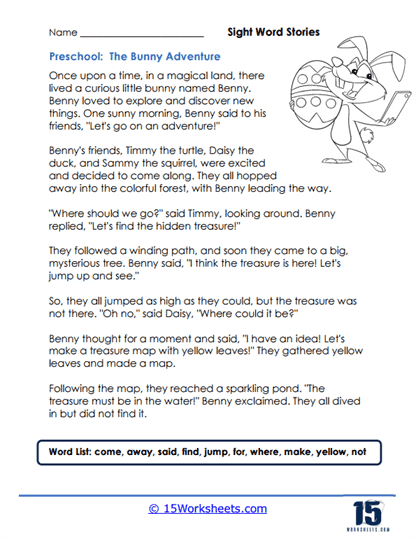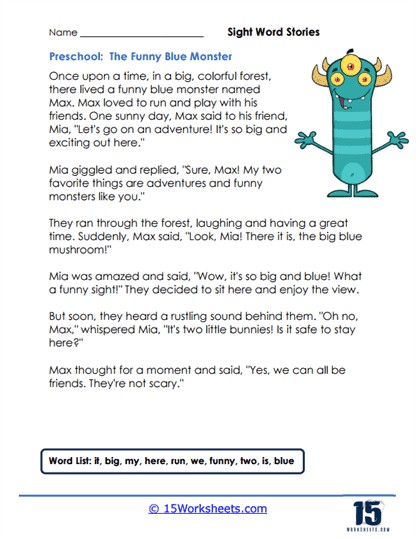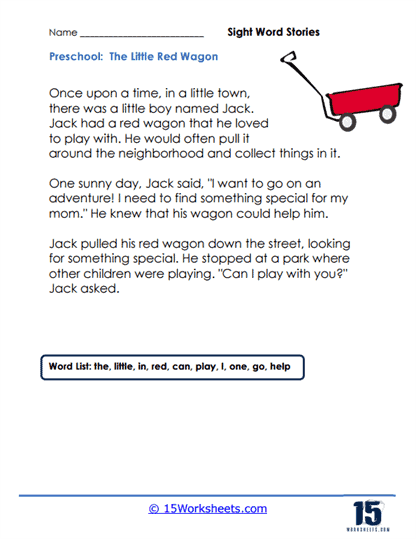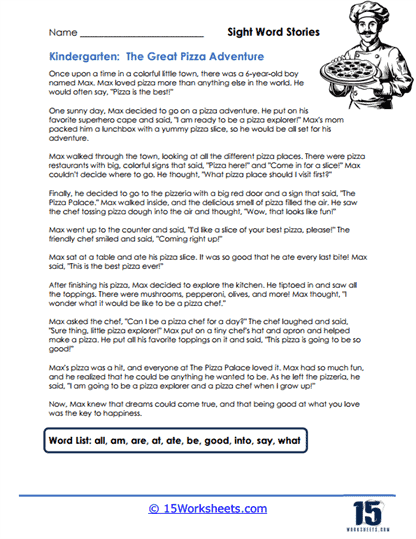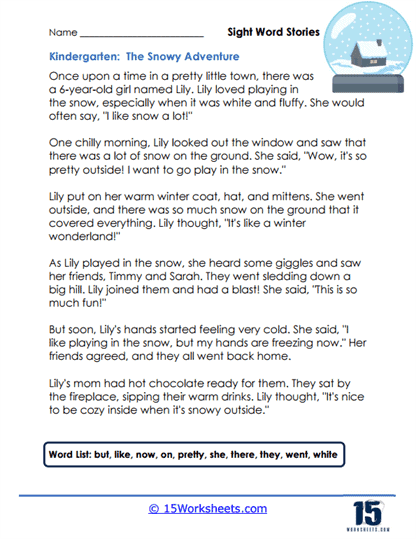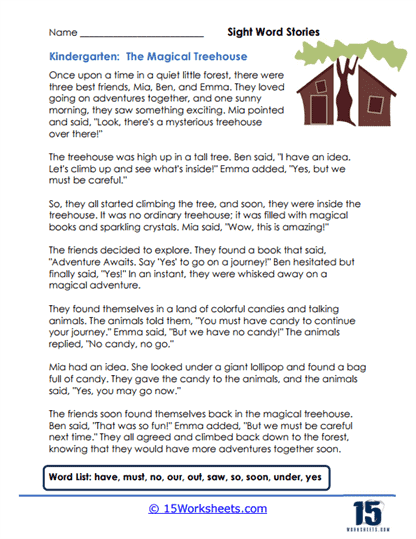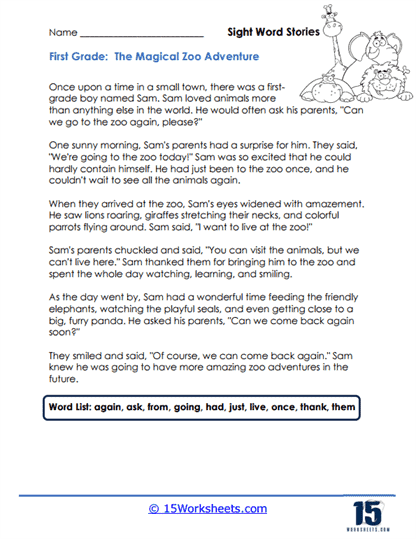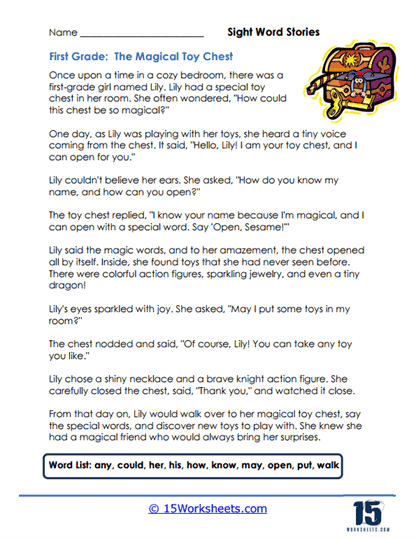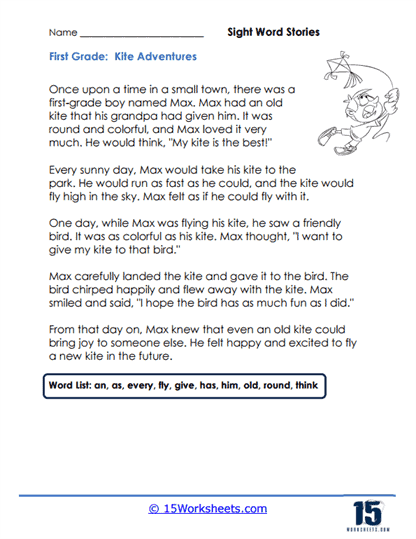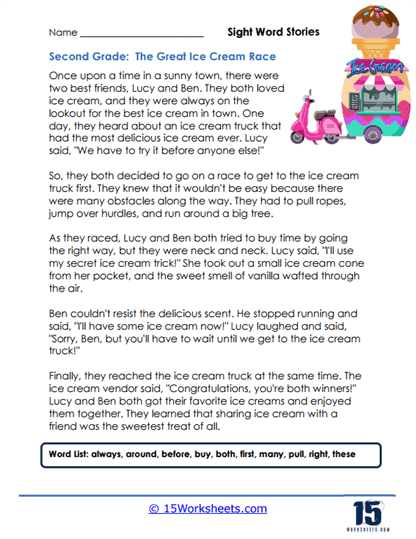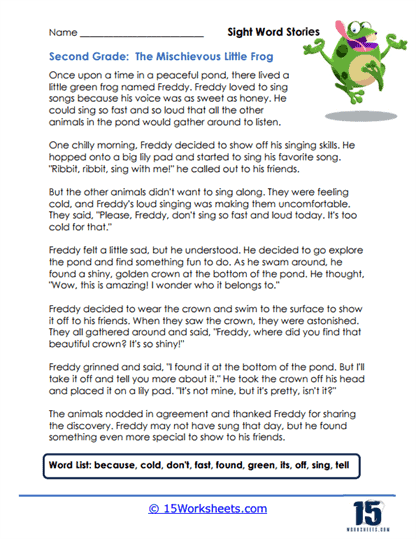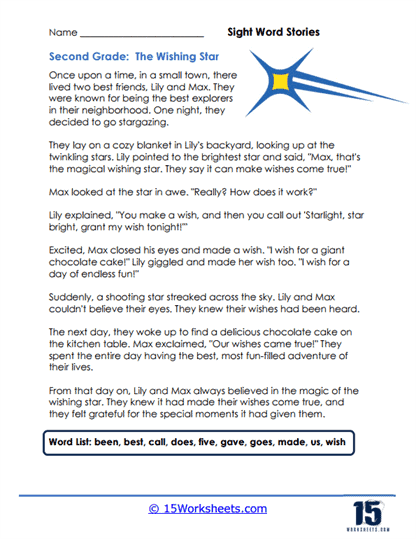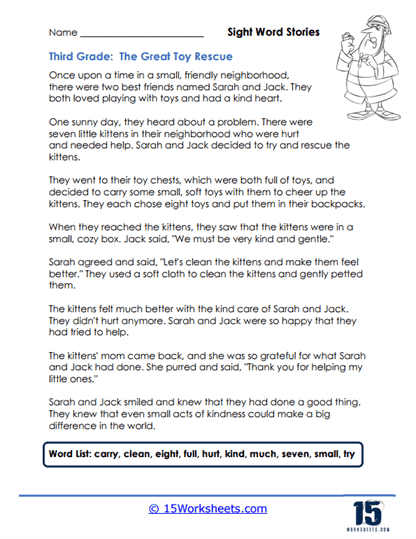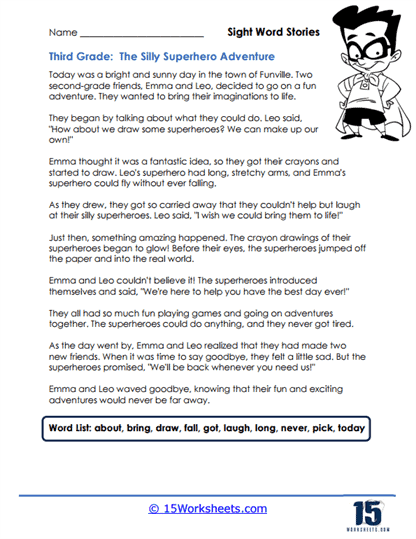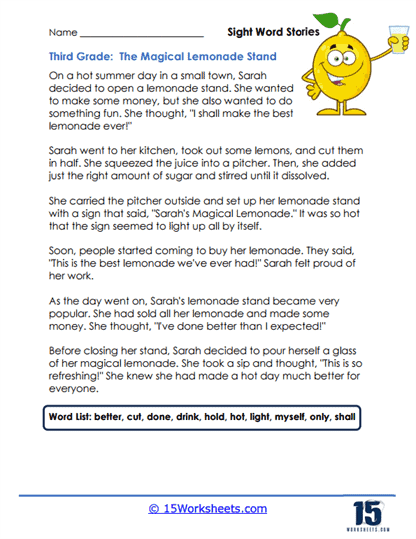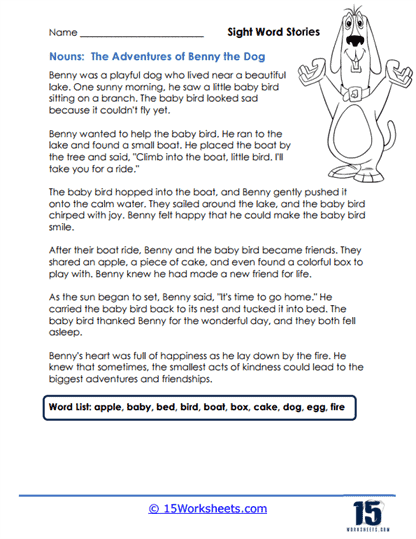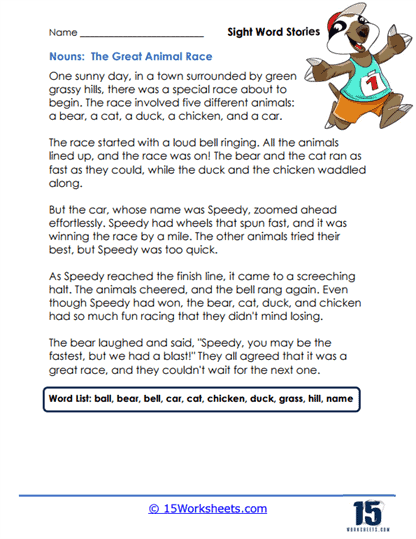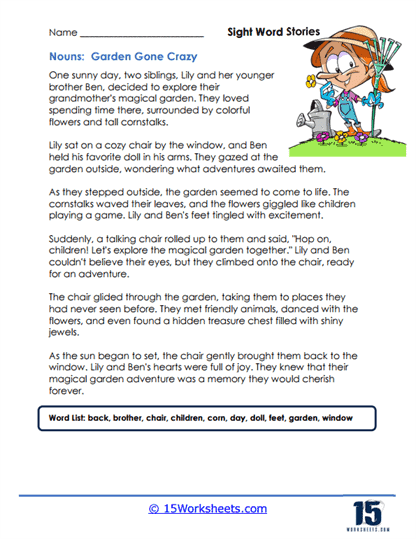Sight Word Stories Worksheets
About These 15 Worksheets
Our sight word story worksheets were created to help early learners, typically in kindergarten through third grade, develop reading and language arts skills. These worksheets focus on teaching “sight words,” which are commonly used words that young readers are encouraged to recognize instantly, without having to sound them out. The ultimate goal is to improve reading fluency and comprehension.
Through a variety of engaging exercises, they not only teach sight words but also enhance overall literacy, making them an essential component of early education.
Types of Exercises
Sight Word Identification – These exercises present a list of sight words and ask students to read and recognize them. Sometimes, these words are mixed with non-sight words to challenge students to differentiate.
Matching Sight Words – In this activity, students match sight words with their corresponding images or definitions. This helps in understanding the meaning and usage of these words.
Fill in the Blanks – Students are given sentences with missing words and must fill in the blanks with appropriate sight words. This tests their understanding of the context in which these words are used.
Sight Word Sentences – Students are asked to use sight words in their own sentences. This promotes creative thinking and helps in understanding how these words fit into everyday language.
Story Comprehension – Short stories primarily using sight words are included, with questions following to test comprehension. This checks the student’s ability to understand and recall information. We offer true/false, multiple choice, and short answer question formats for students.
What Skills Do These Worksheets Focus On
Instant Word Recognition – By frequently encountering and practicing sight words, students develop the ability to recognize these words instantly, which is crucial for reading fluency.
Vocabulary Development – Regular exposure to sight words expands a student’s vocabulary, making it easier for them to understand and learn new texts.
Reading Comprehension – As students become more comfortable with sight words, their comprehension skills improve. They spend less time decoding each word and more time understanding the text as a whole.
Contextual Learning – Using sight words in different contexts (stories, sentences) helps students understand how these words fit into language, improving their overall language skills.
Spelling and Grammar Skills – Activities like word scrambles and sentence creation aid in learning the correct spelling and grammatical usage of sight words.
Confidence Boosting – Mastery of sight words gives young readers a sense of achievement, boosting their confidence and motivation to read.
Foundation for Advanced Learning – A strong grasp of sight words lays the groundwork for more complex reading and writing tasks in higher grades.
What Are Sight Word Stories?
Sight word stories are short texts or books designed to help young children learn to read by recognizing and reading common, high-frequency words, often referred to as “sight words.” Sight words are words that don’t necessarily follow regular phonetic rules, so they are typically memorized by sight rather than sounding them out letter by letter. These words are frequently encountered in early reading materials and are essential for building reading fluency.
Sight word stories typically use a controlled vocabulary that includes a selection of these high-frequency words. The stories are carefully crafted to incorporate these words in meaningful and engaging contexts. This approach helps children practice recognizing and reading these words in a natural reading environment, which can accelerate their reading development.
The goal of sight word stories is to promote reading fluency by enabling children to quickly recognize and read common words, which then allows them to focus on decoding and comprehending the remaining words in a text. This can be particularly helpful for early readers who are just starting to develop their reading skills.
Sight word stories are often used in early literacy programs and are a part of the broader approach to teaching reading known as “whole language” or “balanced literacy.” These stories are typically accompanied by other reading strategies and activities to help children become proficient readers.

